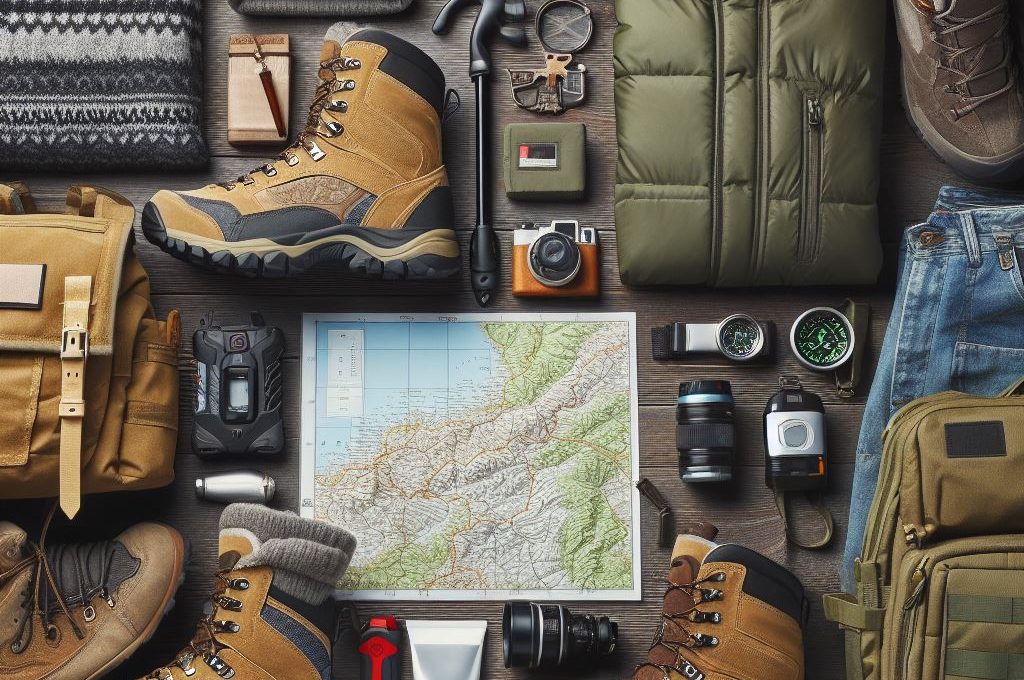The Best Hiking Gear for Beginners: Essential Equipment for Your First Mountain Adventure
Hiking is an incredible way to connect with nature, especially if you’re new to mountain adventures. But before you hit the trails, it’s essential to equip yourself with the right gear to ensure safety, comfort, and enjoyment. In this blog, we’ll explore the best hiking gear for beginners and why each item is crucial for your first mountain hike.

1. Hiking Boots: Comfort and Protection
When it comes to hiking, nothing is more important than a sturdy pair of hiking boots. They offer the right balance of comfort, ankle support, and grip, which is essential for tackling uneven and sometimes slippery mountain trails. Make sure your boots are waterproof and well broken in before your hike.
Recommended Boots for Beginners: Look for lightweight options with strong soles. Brands like Salomon and Merrell are highly rated.
Check out more about the mountain ranges in Pakistan for trails that require reliable footwear.
2. Backpack: Carry the Essentials
A reliable hiking backpack is a must-have for any mountain trek. For beginner hikers, a daypack of 20-30 liters is usually sufficient. Look for a backpack with padded shoulder straps, a waist belt for even weight distribution, and compartments to store your water, snacks, and first aid kit.

For a detailed guide on choosing the right backpack, check out The 15 Best Beginner Hikes in the U.S..
3. Water Bottle or Hydration System
Staying hydrated is crucial, especially during long hikes. Invest in a durable water bottle or, even better, a hydration bladder that fits into your backpack. Many beginner hikers underestimate how much water they need, so aim to bring at least 2 liters.
For long treks like Fairy Meadows in Pakistan, hydration is key, especially at high altitudes.
4. Trekking Poles: Stability and Support
Using trekking poles is one of the best ways to add stability and reduce stress on your knees during a hike. They are particularly useful on uneven terrain or steep descents. Adjustable poles are ideal as they allow you to customize their length depending on the trail.
Image Description: A pair of lightweight, adjustable trekking poles resting on rocky terrain.
Learn more about hiking poles and stability in the Hiking for Beginners: Essential Tips and Gear guide.
5. Clothing: Layer Up
The weather in the mountains can change rapidly, so wearing layers is essential. A moisture-wicking base layer, an insulating mid-layer (such as a fleece), and a waterproof outer shell are key. Hiking pants made of quick-dry material are preferable over jeans or cotton.
Pro Tip: Always pack a hat and gloves, even if the weather seems warm when you start.
To prepare for colder climates, see how layering helped adventurers conquer the mountains in our Sir Edmund Hillary blog.
6. First Aid Kit: Be Prepared
A well-stocked first aid kit is a vital piece of hiking gear. Make sure it contains band-aids, blister pads, antiseptic wipes, and pain relievers. For longer hikes, consider including a thermal blanket and emergency whistle.
Be fully prepared for any trail with the Best Beginner Hikes in Mt. Rainier.
7. Navigation Tools: Map and Compass
Although most people rely on their smartphones for navigation, it’s always good practice to bring a map and compass for mountain hikes. Battery life can drain quickly in the cold or remote areas with no signal, so having analog navigation tools ensures you won’t get lost.

8. Snacks: Keep Your Energy Up
Pack plenty of high-energy snacks like trail mix, energy bars, and fruits to keep you going. For longer hikes, consider packing a small meal like a sandwich or wrap. The key is to keep your energy up without feeling too full.
Conclusion: Gear Up for Your First Mountain Hike
Preparing for a mountain hike is all about having the right gear to ensure a safe and enjoyable experience. Whether it’s your first time on the trails or you’re just looking for the best beginner-friendly hiking equipment, investing in quality gear will make all the difference.
For more hiking tips, gear reviews, and mountain guides, explore MountainsThrust!


